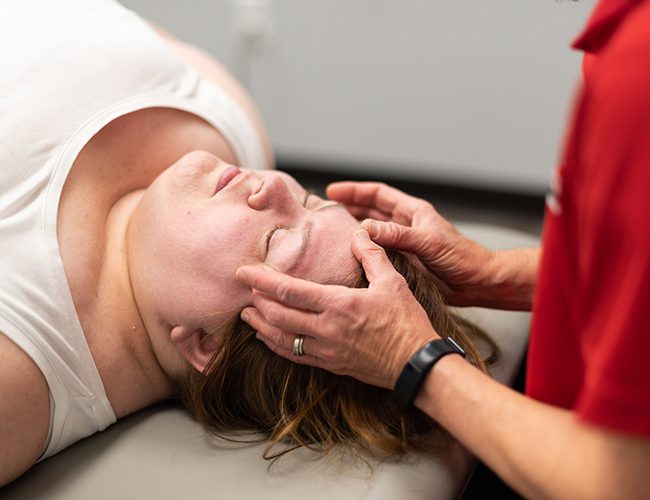The key to successful management of headaches is identifying the type of headache you have. There are several types of headaches, and it is common to suffer from more than one type. A thorough evaluation and treatment by a physical therapist can help you find relief.
Our Process
Musculoskeletal Evaluation: A thorough evaluation will be performed on your initial visit to assess for possible postural contributions, muscle imbalances, myofascial restrictions, and joint dysfunction that may be contributing to your pain.
Manual Therapy: Manual therapy is a hands-on approach that addresses restrictions in the soft tissue, the myofascial system, and/or the spinal joints.
Therapeutic Modalities: Modalities, such as heat, cold, ultrasound, and cervical traction can be used to help with pain control in the initial or acute phase of your headache.
Therapeutic Exercise: Exercise to address muscle imbalances, correct spinal motion, spinal stabilization, and posture are an important part of your treatment.
Education on posture and body mechanics: We will help you with body awareness and to understand the role posture and the way you move can affect your headaches.
Relaxation techniques: Your autonomic nervous system can play a role in maintaining muscle tension. When you are stressed, the sympathetic part of this nervous system is overactive and can contribute to your pain experience. Headache treatment involving relaxation techniques will help calm this system and help you with pain management.

Since each type of headache responds best to a particular treatment, it’s important for your physical therapist to determine the type of headache you have. Saunders physical therapists are particularly good at this.
Cervicogenic headache is also called “occipital headache”. The occipital region of the neck is at the back of the head, and this is where the symptoms are found. With tension headaches, pain is usually experienced on both sides of the head, but can occur on only one side. Symptoms are often constant and do not change with activity or rest. With a cluster headache, pain is very severe and always on one side of the head. Generally pain is experienced behind the eye and is described as pulsing. With a migraine headache, pain is experienced throughout the entire head, deep within, and is described as pulsing pain of moderate to severe intensity. Cervicogenic Occipital Headaches
Tension Headaches
Cluster Headaches
Migraine Headaches




